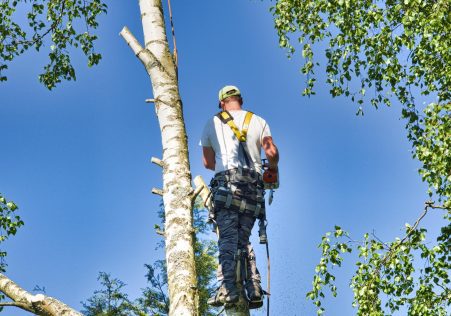The Surprisingly Longevity of Tree Roots After Cutting Down

Tree removal is a crucial job for many property owners, but it’s not as simple as cutting down the branches and leaving the root to decay. Knowing the life span of tree roots is crucial in ensuring that the removal process is done properly and safely. This article we’ll examine the duration that tree roots live after a tree has been cut down and answer several of the frequently-asked concerns about this subject.
How long do tree roots last after cutting them down?
The lifespan of the tree’s roots after it has been cut down can differ greatly based on the kind of the tree being cut down, length of the root, and the environment conditions. In general, it is safe to assume that the tree’s roots continue to exist for several years after the tree is removed. This is because the roots are capable of taking in moisture and nutrients from soil even after the tree has been removed.
Factors that affect the longevity of Tree Roots
There are several aspects that impact the life span of tree roots after a tree is removed. A few of them are: Species of tree Certain species of trees contain roots that are robust and last longer than others. For example, oak tree roots are known to live for several decades after the tree was removed. Size of roots The bigger the roots of a tree is, the longer they’ll likely remain after the tree has been removed. This is because bigger roots are more able to absorb water and nutrients in the soil. Environment conditions: The soil type, temperature, as well as levels of moisture in the region where trees were removed could influence the lifespan that the root system. If the soil is dry and compacted the roots are likely to decompose more rapidly. In the case of soil that is well-drained and moist the roots will last longer.
What Happens to Tree Roots After cutting them down?
If trees are cut down the roots slowly begin to decompose. This process can take several years dependent on the variables that were discussed earlier. During this time, the roots will slowly discharge nutrients to the soil which can be beneficial for other plants within the region. When the roots are fully gone through their decomposition, they will not pose a risk to structures or landscapes around them.
FAQs:
Are tree roots able to grow again after cutting them down?
No, tree roots cannot regrow after a tree has been removed. Once the roots are removed, they slowly start to decay and not be able to being regrown.
Are tree roots able to continue to expand after cutting them down?
The roots of trees won’t remain growing after a tree has been cut down. But, they’ll continue to live for several years because they’re still capable of absorbing moisture and nutrients in the soil.
Will tree roots continue to grow after cutting down?
It is not true that tree roots will not continue to spread after a tree is removed. Once the tree has been removed, the roots will slowly begin to decompose and not pose a risk to surrounding structures or landscapes.
Conclusion:
In conclusion, the duration of tree roots following the tree has been cut down can vary greatly dependent on a variety of factors. Understanding the length of time the roots of trees will last is vital to ensure that the removal of trees is done correctly and safely. If you have trees that need to be removed, it’s always best to hire an experienced The Hills Tree Pruning arborist to carry out the job. Our highly-trained and experienced arborists have the equipment and expertise to safely and effectively remove trees, and to address any concerns about the longevity and longevity of roots. Call us today by calling 0480 024 203 to schedule a consult and to learn the details about our services for tree removal for The Hills Shire. Do not risk damaging your property or putting yourself in danger by attempting to remove a tree your own. Let the experts from The Hills Tree Pruning handle all of the tree removal requirements.





















